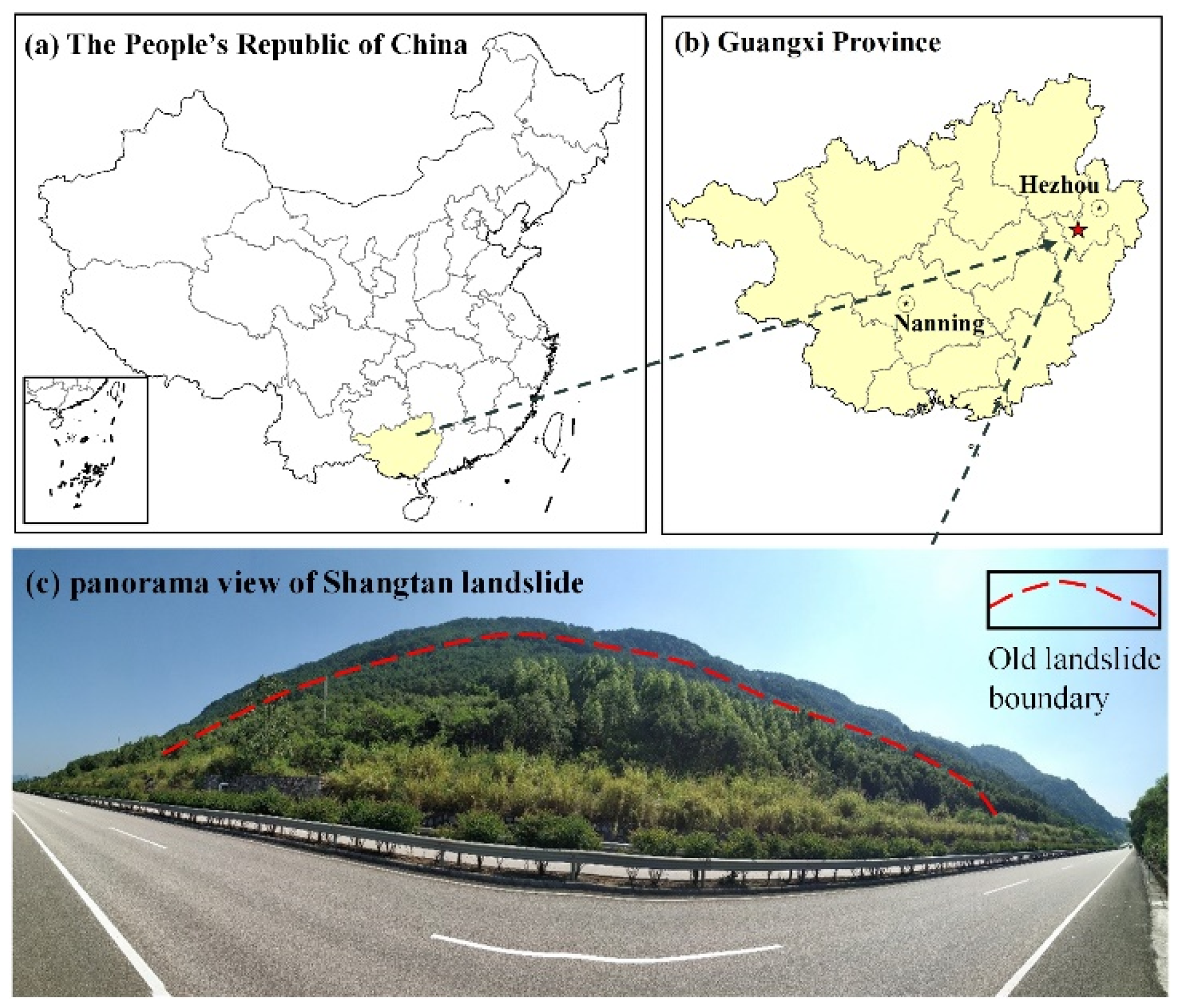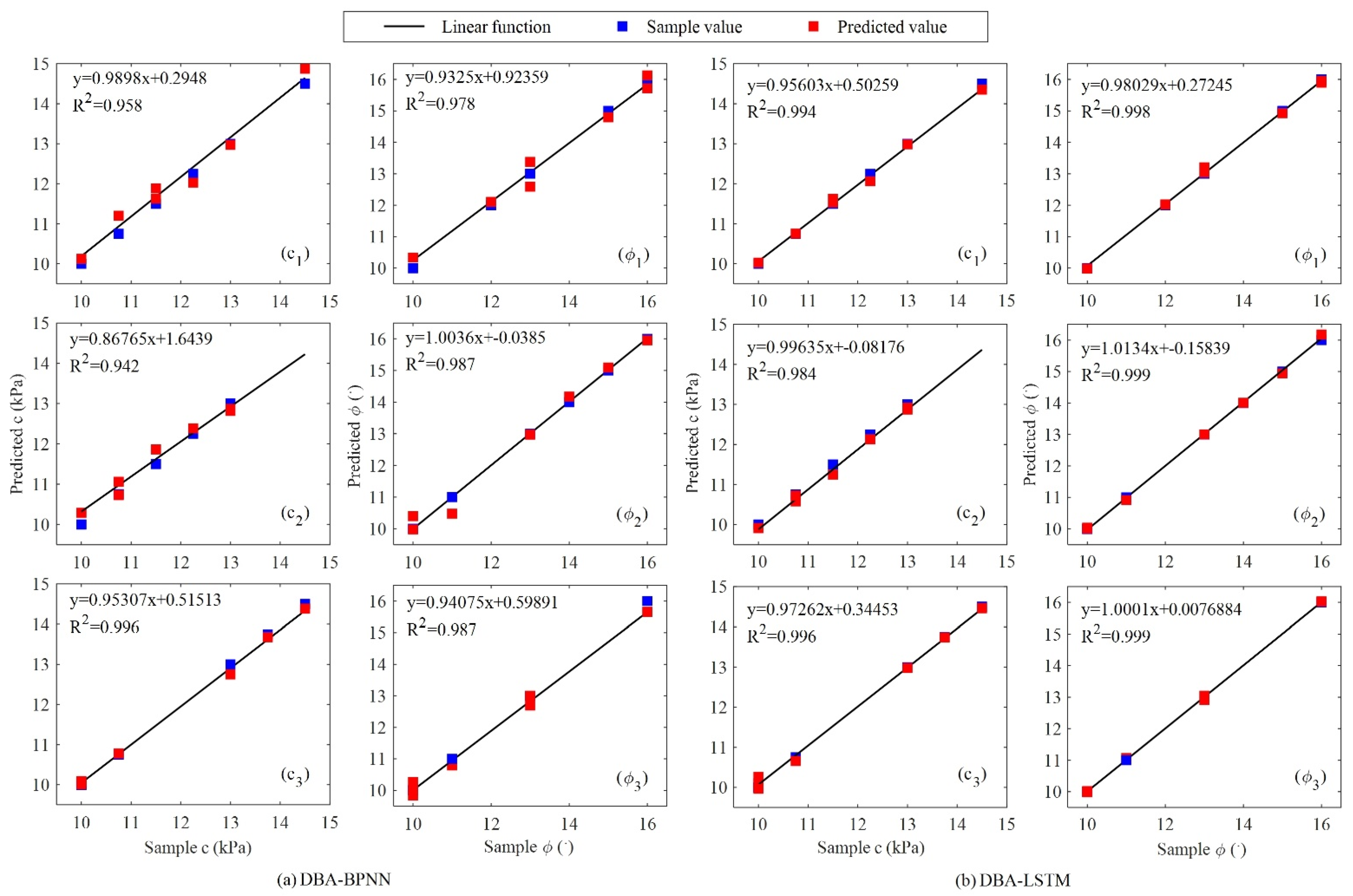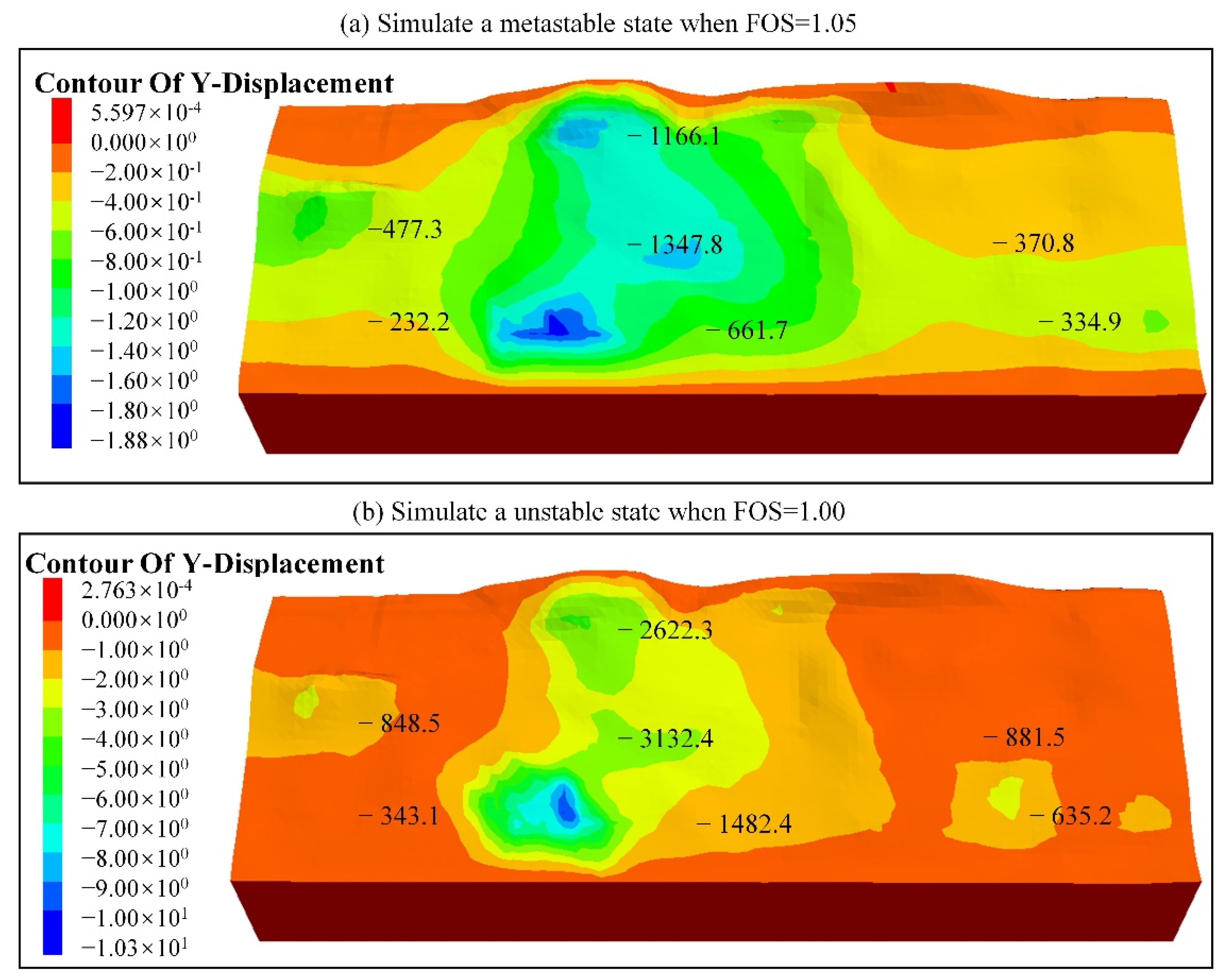2.2. Displacement Back-Analysis Model Based on LSTM
Displacement back-analysis is a method that can be implemented to find the best valuation of inverted parameters by establishing an objective function model based on the least squares optimization criterion according to the functional relationship among the observed displacement and the forward calculated displacement. The general expression of the objective function model is as follows [
24]:
where, if the basic displacement back-analysis data contain
mutually independent observations
, then the weight matrix is
,
is the objective function error value, and
is the corresponding numerical simulation forward-calculated displacement. The traditional method calculates the objective function error value by multiple forward-analysis iterations, which takes a lot of time and has low computational efficiency. The DBA-ML algorithm is an effective means to solve this problem. The processes of the DBA-BPNN and DBA-SVM algorithms and specific applications for them have been described in detail in the literature [
28,
39]. However, with the rapid development of artificial intelligence algorithms, deep learning algorithms with multiple hidden layers have been shown to have superior feature learning capabilities compared to shallow machine learning algorithms [
32]. In this paper, a deep learning algorithm is employed for displacement back-analysis for the first time, and a DBA-LSTM model is constructed.
The LSTM network can avoid the problem of gradient disappearance by changing the internal structure of the cell, adding input gates, forget gates, and output gates into its memory cell, which controls whether to forget historical information or to update the state of the cell via the gating unit [
28]. The LSTM network model and its cell structure are shown in
Figure 5, and the model can be composed of a multilayer network. To facilitate understanding,
Figure 5 shows a single-layer LTSM network structure [
40]. The one-layer LTSM network generally consists of several cells, and there are three inputs in each cell structure, which are the input
of the current moment, the input
, and the memory information
of the previous moment. Within the cell structure, three gates control the discard and retention of historical and current information: the forget gate
, the input gate
, and the output gate
. The formula is as follows:
where
is the activation function,
and
are the weight matrix and offset matrix of the control gates. After obtaining the output information of the three control gates from Equation (2), the short-term memory information
and the long-short memory information
can be calculated using the following equation:
where
is the activation function that transforms the output to a value between −1 and 1.
The DBA-LSTM model was constructed as follows:
Step 1: Prepare the training samples. Let there be
groups of training samples and let each group of training samples consist of
displacements
and
target parameters
; then, the initial information matrix of the target parameters is
where
is the value of the ith target parameter of the nth training sample.
Step 2: Eliminate the different magnitudes between the different parameters, and the initial information matrix can be normalized by min–max normalization or zero-mean normalization to obtain the dimensionless matrix .
Step 3: Determine the parameters of the LSTM network model, where the input feature dimension L, the number of network layers K, and the number of neurons S, are considered to be the key parameters. In the DBA-LSTM model, the dimension of the input features is the number of displacement data in a set of training samples, i.e., ; the number of neurons is generally taken as the Nth power of 2; the more layers K in the LSTM network, the stronger the nonlinear fitting ability of the model and the better the learning effect; thus, the scheme with a better effect and fewer layers is generally chosen to ensure the computational efficiency.
Step 4: Network training: The training algorithm of the LSTM network is the BP algorithm, which can be regarded as the training process that alternates between forward propagation and backward propagation, and mainly uses the error principle of backward propagation to feedback the errors generated during the network training process to the LSTM network by continuously adjusting the connection weight of each neuron in the network until the error is reduced to the specified range, at which time the system stops learning.
Step 5: Network testing. After establishing the DBA-LSTM inversion model, the performance of the model is generally evaluated by calculating the goodness of fit
, which is calculated as follows:
where
is the true value,
is the inversion value, and
is the average of the true value. Besides calculating
, the simulated calculation results of each measurement point can be calculated using the inversion results for positive analysis and comparing with them the actual measurement results.
2.3. Threshold Warning Method Based on the DBA-LSTM and Numerical Simulation Algorithms
Numerical simulations can not only analyze the current landslide stability but can also simulate the landslide failure scenario and calculate the landslide failure warning threshold. To ensure the accuracy of the numerical simulation results, the proposed method suggests that the physical and mechanical parameters of a numerical model should be corrected by the DBA-LSTM algorithm according to the relative displacement of rock and soil mass caused by dynamic construction or other reasons before implementing the numerical simulation. The algorithm flow is shown in
Figure 6, and the detailed steps are as follows:
Step 1: Establish a landslide grid model based on the topographic data, collect and organize the deformation monitoring data information, including the pre-processing of the original data and the node information of its grid located according to the coordinates of monitoring points, and define the numerical model based on the geological data.
Step 2: When there are geotechnical parameters with uncertainty in the numerical model, construct machine learning training samples using the orthogonal test method, and after training, to obtain a reliable DBA-LSTM model, correct these uncertain parameters using the measured data and take them as the current equivalent mechanical parameters of the landslide.
Step 3: Based on the modified numerical model, the current landslide factor of safety is calculated using the tension–shear damage strength reduction method [
41], and the factor of safety
can be written as
where
and
denote the shear strength and tensile strength indicators, and
represent the parameters after reduction. For the detailed method, refer to the literature [
42].
Step 4: Determine the potential failure conditions of the landslide, such as the dynamic excavation, groundwater level changes, etc. Taking the changes in the groundwater level as an example, the seepage module is invoked in the numerical simulation software to simulate and calculate the displacement calculation results under the limit equilibrium state of the landslide by continuously adjusting the water level conditions, and the corresponding warning criteria (e.g., water level and relative displacement thresholds) can be obtained.


















